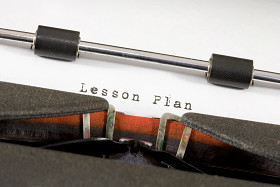Depending on the age and needs of the student, I use a variety of assessment tools, including but not limited to:
- Qualitative Reading Inventory-6
- Gallistel Ellis Test of Coding Skills
- RAN/RAS (Rapid Automatic Naming and Rapid Automatic Stimulus Tests)
- Gray Diagnostic Reading Tests (GDRT-2) and Gray Oral Reading Tests (GORT-5)
- Auditory Processing Abilities Test (APAT)
- The Rosner Test of Auditory Analysis
Additionally, I assess both written and verbal expressive language skills and a student’s ability to follow both an auditory and a written series of directions.
 Beyond that, I try to get an understanding of a student’s relationship to learning and school, his/her interests, and what he/she states as strengths and weaknesses. A lot of my work involves utilizing these strengths – those named by the student and those I perceive or we discover together – to bolster any areas of weakness. We set goals together and students develop a language and understanding around attaining these goals. We work to demystify the learning process and understand, in an age-appropriate manner, how, for example, the language center of the brain works and why we do the specific activities we do. I find that when students have an understanding of why we do various auditory and visual drills, they are more willing to participate. Often, they offer suggestions of new ways to do certain activities in accordance with their specific learning styles. It is a collaboration and students are invested in the process. “We’re building that neural pathway and this idea is getting into your long-term memory,” you might hear me say in a session. A younger student might state, “We’re exercising the word part of my brain!”
Beyond that, I try to get an understanding of a student’s relationship to learning and school, his/her interests, and what he/she states as strengths and weaknesses. A lot of my work involves utilizing these strengths – those named by the student and those I perceive or we discover together – to bolster any areas of weakness. We set goals together and students develop a language and understanding around attaining these goals. We work to demystify the learning process and understand, in an age-appropriate manner, how, for example, the language center of the brain works and why we do the specific activities we do. I find that when students have an understanding of why we do various auditory and visual drills, they are more willing to participate. Often, they offer suggestions of new ways to do certain activities in accordance with their specific learning styles. It is a collaboration and students are invested in the process. “We’re building that neural pathway and this idea is getting into your long-term memory,” you might hear me say in a session. A younger student might state, “We’re exercising the word part of my brain!”
 As each student has a distinct profile, each session has an individualized lesson plan. One student may need a more tactile approach to concepts, while another may need pictures and more visual clues. Another may need to put ideas to music, and yet another simple repetition. My office is filled with “tools” to ensure that every session provides opportunities for success: a sand-board, t-stool, stress ball, bean bowl, materials to draw and visualize a concept, etc. In this way, self-monitoring and self-advocacy are consistently fostered.
As each student has a distinct profile, each session has an individualized lesson plan. One student may need a more tactile approach to concepts, while another may need pictures and more visual clues. Another may need to put ideas to music, and yet another simple repetition. My office is filled with “tools” to ensure that every session provides opportunities for success: a sand-board, t-stool, stress ball, bean bowl, materials to draw and visualize a concept, etc. In this way, self-monitoring and self-advocacy are consistently fostered.
